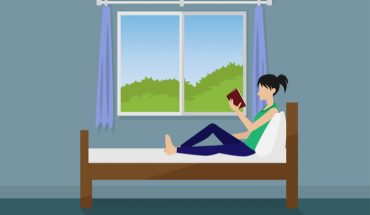Libido is the background drive to our sexuality. It is complex – dictated by many factors including levels of sex hormones, environment and the brain. So it is not surprising that it can swing wildly, depending on stress levels, how much sleep you are getting and what there is to distract you. Women have a very sensitive on /off switch when it comes to their libido. ‘Anything distracting – even a tiny little thing- can inhibit sexual desire,’ explains Dr Anna Pallecaros, a sexual health specialist based in London. The more sex you have, though, the more you want, although why, we don’t yet know. Desire is not the same as libido. ‘It is incredibly dynamic and can ebb and flow depending on who you are with, the tone of their voice, even the way they look at you.’
Studies show that testosterone, the ‘male’ sex hormone is one of the key chemicals that influence libido. Men who have been castrated before they become sexually mature never develop a libido at all. Women also produce testosterone in their ovaries, although in smaller quantities. Stress depresses the production of testosterone, which causes many women to lose interest in sex.
Although women produce less oestrogen when they age, the ovaries may continue to produce testosterone throughout life, which may explain why libido can remain immune. According to a UK study, three-quarters of women over 40 believe sex is better in their 40s than it was in their 20s.
Is position paramount?
Look up any sex guide, and there are literally are dozens of positions to choose from ranging from the coyly named reverse cowgirl to rear entry and even the wheelbarrow. All claim to offer a particular benefit, to the woman or the man or both, either because they tighten the vagina, superstimulate the clitoris to offer access to the infamous G-spot. In fact, Dr Pallecaros says that all pairings are different and couples should experiment to find out what is best for them. ‘A lot of people swear by the missionary position, even though it has had a bad press recently. In fact, this position does allow clitoral orgasm as well as stimulating key erogenous zones of the vulva and vagina.’
Harley Street gynaecologist Dr Mike Bowen says that woman on top do have greater control over the sexual act, dictating rhythm and pace. ‘This can be beneficial if you need your man to slow down or want to avoid deep penetration.
Rear entry position increases friction between the vaginal walls and the penis shaft, which are meeting at opposing angles. In this position, the penis also hits the front wall of the vagina, which is an area dense with nerve endings. Magnetic resonance imaging shows strikingly that during female sexual arousal changes occurs in the front vaginal wall which becomes swollen and engorged.
Mind and sex
The way your mind works really does make a difference to the way you enjoy sex and men and women are wired up differently. Studies have shown that while a man will think about sex every 52 seconds, the subject tends to cross women’s minds just once a day.
Recent advances in scanning technology have shown the complex interplay between the brain and the body as sexual desire heats up. ‘We now know a lot more about the nitty gritty of sexual arousal,’ explains Dr Pallecaros.
‘Sexual arousal lights up many areas of the brain, including the medial amygdala, ventral midbrain and caudate nucleus. But, scans show that women also need to deactivate areas of disinhibition, to then allow sexual arousal to flourish. This is where the power of intimacy, meaning and relationships really gear up sex for women (in a way that’s difficult for men to grasp).’
A neurotransmitter called dopamine is known to play a key part in the sex act for men and women. According to psychiatrist, Dr Owen Bowden-Jones: ‘Sexual activity is an essential activity required for the continuation of the species and the brain rewards the body for having sex by releasing Dopamine which makes the person experience pleasure.’ Incidentally, sex addicts may get too much of a dopamine high. ‘For the sex addict, this reward system may be excessively rewarding, leading to the addict focusing on sex above all else.’
Plastic for perfect
Dr Mike Bowen, a gynaecologist based in London, says that the number of women seeking genital surgery, including hymenoplasty, labia reduction and vaginal tightening, has risen dramatically in the last few years. ‘Women want to take control of their own sexuality and are seeking these procedures because they want to have the best sex life they can.’ Labia reduction is literally trimming excess skin from the protruding lips of the vagina. ‘It is often done because the patient thinks it is unsightly or uncomfortable. If it helps her feel better about herself, it is going to improve her confidence as a lover.’ Vaginal tightening is usually done after childbirth has weakened the vaginal muscles, causing them to loosen.
How to improve your orgasm
Try rekindling or start telling your partner about your fantasies – and don’t be embarrassed. Mike Bowen says your wildest desires are far more common than you’d expect.
Go beyond the G-spot. Scientists now know that women have extensive erogenous tissue running along from the clitoris, clitoral body and bulbs, along to the entrance of the vagina and then internally between the vagina and the urethra (tube to the bladder). Similar to the penis, it’s full of nerve endings and blood vessels, becoming engorged during arousal.’ Do your pelvic floor exercises, which can keep vaginal muscles firm and also increase blood supply to the whole pelvic region. But the ‘lift and squeeze’ exercises, developed by Dr Arnold Kegel in the 1950s need to be done properly – preferably with something in the vagina itself. Research has clearly demonstrated that most women benefit from using cones, vaginal balls and weights.
- Combination of drugs could prevent thousands of heart attacks - 21st April 2025
- UQ Study Links Poor Teen Diets to Heavy Social Media Use - 21st April 2025
- Gut microbiome could delay onset of type 1 diabetes - 3rd April 2025






